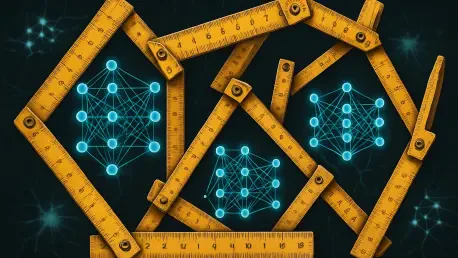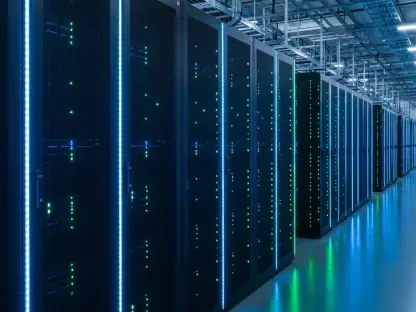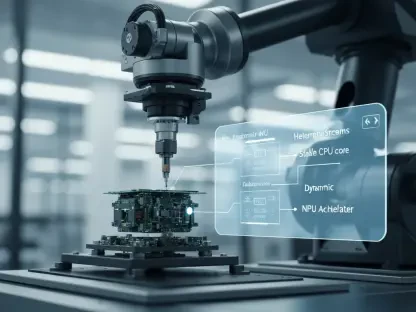In the rapidly evolving field of artificial intelligence, understanding the inner workings of deep neural networks remains a formidable endeavor. Despite significant advances, the mystery surrounding why certain networks outperform others persists. This challenge stems from the lack of a precise mathematical framework that can predict neural network behavior, necessitating innovative approaches to unravel their complexities. Recently, a team led by Prof. Dr. Ivan Dokmanić at the University of Basel has ventured into this territory by employing an unexpected analogy with folding rulers. This creative model seeks to illuminate the dynamics of neural networks, providing insights into how their layers and parameters contribute to performance.
Unraveling Deep Neural Network Layers
The Role of Layers in Data Processing
Deep neural networks comprise multiple interconnected layers functioning akin to neurons, carefully orchestrated to process data progressively. Each layer undertakes a specific task in the data’s transformation, allowing the network to distinguish between classes, such as identifying a “cat” versus a “dog.” This layered approach is central to the process known as data separation. Ideally, an optimally configured network achieves a balanced contribution from each layer towards this separation. However, complexities arise when some layers disproportionately influence outcomes. These disparities often hinge on the network’s architecture and the nature of its operations, which may be linear—scaling inputs via multiplication—or nonlinear, involving intricate computations.
In the quest to optimize data separation, randomness or noise is deliberately integrated into training. This counterintuitive practice involves periodically ignoring random neuron subsets, which surprisingly enhances network performance. The interaction between nonlinearity and noise gives rise to behaviors that defy prediction, underscoring the need for a deeper grasp of their mechanics. Research indicates that when data separation is consistently distributed across layers, overall network efficiency is improved. This understanding paves the way for optimizing neural networks by strategically distributing computational tasks.
Physical Models for Enhanced Understanding
Dokmanić and his team have embraced mechanical principles to create tangible models that elucidate neural network behavior. Among these, the folding ruler stands out as an accessible analogy for observing learning dynamics. In this model, each segment of the ruler symbolizes a neural network layer, where the sequential opening of sections emulates the unfolding of data processing through layers. The mechanical friction between segments embodies nonlinearity, with erratic movements at the ruler’s end mimicking noise—a critical aspect influencing network efficiency.
The team’s experiments using the folding ruler offered valuable analogs to neural networks. Slowly pulling the ruler allowed initial sections to open while keeping others largely closed, analogous to scenarios where data separation predominantly occurs in shallower network layers. Conversely, rapid and slightly agitated pulls resulted in the ruler sections unfolding uniformly, mirroring even data distribution across layers. These physical simulations demonstrated profound similarities to actual neural network operations, shedding light on potential optimization strategies.
Enhancing Network Training Through Mechanical Analogies
From Theory to Practical Application
The overarching aim of Dokmanić’s research is refining training methodologies for advanced deep neural networks, traditionally reliant on trial and error to determine optimal parameter values, such as noise levels and nonlinearity. The mechanical analogies derived from folding rulers and other models offer a systematic, theoretically-grounded framework for such optimization. By understanding the interplay between layers, noise, and nonlinearity, researchers can approach neural network training with increased precision and reduced resource expenditure.
Cheng Shi, a Ph.D. student on Dokmanić’s team, noted the striking resemblance between the mechanical simulations and real-world network behavior. Simulating models using blocks and springs, the team observed outcomes that resonated with the results seen in neural networks. This congruency suggests that mechanical analogs could be instrumental in refining AI systems across various applications. Taking these insights forward, Dokmanić’s group plans to extend their modeling techniques to large language models, aiming to expand their practical applications and enhance AI’s overall utility.
Toward More Efficient AI Systems
In the fast-paced and ever-changing realm of artificial intelligence, deciphering the intricate workings of deep neural networks remains a daunting task. Despite significant technological strides, the enigma of why certain neural networks excel over others lingers. This challenge emerges from the absence of a precise mathematical model capable of accurately predicting neural network behavior. The situation demands innovative approaches to unravel the complexities that define these networks. Recently, under the leadership of Prof. Dr. Ivan Dokmanić, a research team at the University of Basel embarked on an exploration into this complex field using an unconventional analogy—a folding ruler. This creative model aims to shed light on the dynamics of neural networks, offering valuable insights into how their layers and parameters influence performance. The folding ruler analogy not only enhances our understanding but also opens new pathways for optimizing neural network architectures, ultimately aiding in the development of more efficient and effective AI systems.









